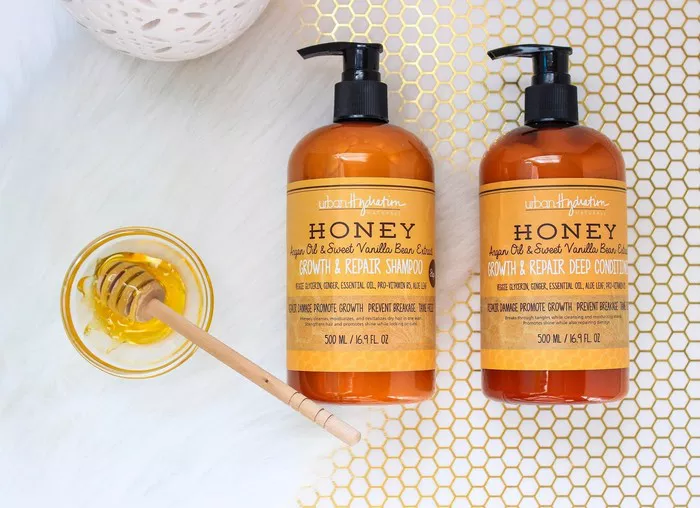In the pursuit of achieving the perfect hairstyle, heat styling tools like flat irons, curling wands, and blow dryers have become indispensable for many. However, frequent exposure to high temperatures can wreak havoc on the health and appearance of your hair, leading to dryness, breakage, and dullness. To safeguard your precious locks from the damaging effects of heat, incorporating a heat protectant into your hair care routine is crucial. In this article, we will delve into the world of heat protectants, exploring their importance, types, key ingredients, application tips, product recommendations, DIY solutions, and addressing common questions and concerns.
Explanation of Heat Damage
Before delving into the realm of heat protectants, it’s essential to understand how heat styling can wreak havoc on your hair. When subjected to high temperatures, the cuticle, the outermost layer of the hair shaft, can become damaged. This damage leads to moisture loss, weakening of the hair structure, and ultimately, breakage. Additionally, prolonged exposure to heat can cause protein degradation within the hair, further compromising its strength and elasticity. Over time, this can result in brittle, frizzy, and lifeless hair.
Types of Heat Protectants
Heat protectants come in various forms, each offering unique benefits and suitability for different hair types and styling preferences. Some common types of heat protectants include:
1. Sprays: Lightweight and easy to apply, heat protectant sprays form a barrier over the hair, shielding it from heat damage without weighing it down.
2. Creams: Rich and nourishing, heat protectant creams provide intense hydration and protection, making them ideal for dry or damaged hair.
3. Oils: Natural oils like argan oil, coconut oil, and grapeseed oil can also double as heat protectants, offering both thermal protection and hydration.
4. Serums: Silicone-based serums coat the hair shaft, smoothing the cuticle and minimizing heat damage while adding shine and manageability.
Key Ingredients
Effective heat protectants often contain a blend of ingredients specifically formulated to shield the hair from heat damage. Some key ingredients to look for include:
1. Silicones: These compounds create a protective barrier around the hair shaft, reducing moisture loss and preventing heat damage.
2. Proteins: Ingredients like keratin, wheat protein, and silk protein help strengthen the hair and protect it from heat-induced breakage.
3. Natural Extracts: Botanical extracts such as aloe vera, green tea, and avocado oil provide antioxidant protection and nourishment to the hair, combating the damaging effects of heat.
Application Tips
To reap the maximum benefits of your heat protectant, it’s essential to apply it correctly. Here are some tips for effective application:
1. Start with Clean, Damp Hair: Apply the heat protectant to freshly washed, towel-dried hair to ensure even distribution and maximum absorption.
2. Use the Right Amount: The amount of heat protectant needed depends on your hair length and thickness. Start with a small amount and adjust as needed, focusing on the mid-lengths and ends where the hair is most vulnerable to heat damage.
3. Comb Through: Use a wide-tooth comb to evenly distribute the product throughout your hair, ensuring every strand is coated for maximum protection.
4. Wait Before Styling: Allow the heat protectant to dry completely before using heat styling tools to prevent product buildup and potential damage.
Product Recommendations
When it comes to choosing a heat protectant, there are countless options available on the market. Here are some recommendations catering to different hair types and needs:
1. Spray: TRESemmé Thermal Creations Heat Tamer Spray
2. Cream: Oribe Royal Blowout Heat Styling Spray
3. Oil: Moroccanoil Heat Styling Protection
4. Serum: Paul Mitchell Super Skinny Serum
DIY Solutions
For those who prefer natural alternatives or enjoy DIY projects, creating your heat protectant at home is a great option. Here’s a simple recipe for a homemade heat protectant spray:
DIY Heat Protectant Spray:
- 1 cup distilled water
- 2 tablespoons aloe vera gel
- 1 tablespoon argan oil
- 1 teaspoon vegetable glycerin
- 10 drops lavender essential oil (optional for fragrance)
Combine all ingredients in a spray bottle and shake well to mix. Spray onto damp hair before heat styling for protection and hydration.
FAQs
Can I use a heat protectant on dry hair?
While it’s best to apply heat protectant to damp hair, you can still use it on dry hair for added protection before using heat styling tools.
How often should I use a heat protectant?
It’s recommended to use a heat protectant every time you heat style your hair to minimize damage and maintain its health and integrity.
Can heat protectants make my hair greasy?
Some heavier formulations or excessive use of heat protectants can potentially weigh down fine hair or make it appear greasy. Opt for lightweight formulas or adjust the amount used accordingly.
In conclusion, heat protectants play a vital role in safeguarding your hair from the damaging effects of heat styling. By choosing the right product and incorporating it into your hair care routine, you can enjoy beautifully styled hair without compromising its health and vitality. Whether you opt for commercial products or DIY solutions, prioritizing heat protection is key to maintaining luscious locks for years to come.


